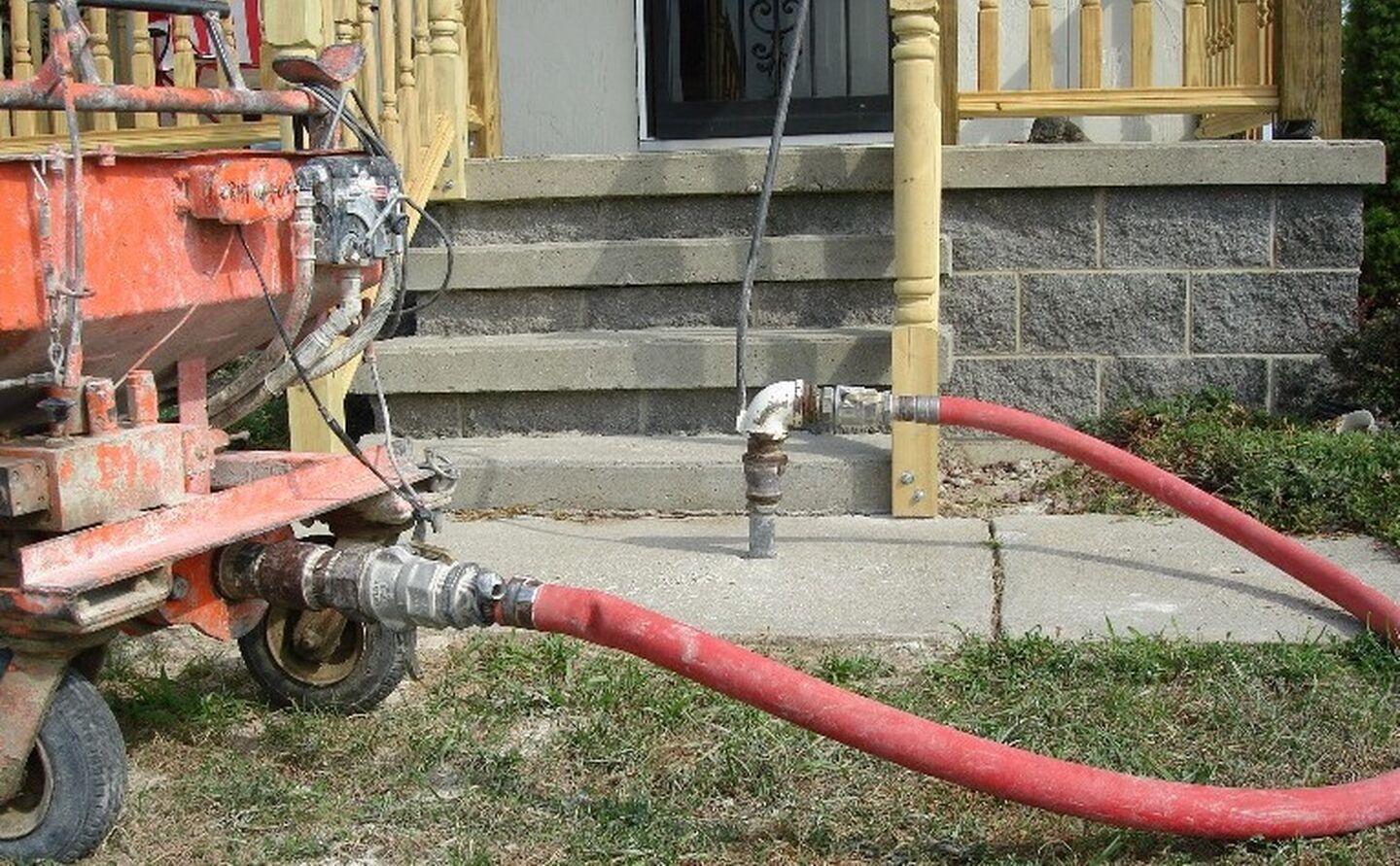Mudjacking for Sinking Concrete, What is it?

Do you have sinking concrete around your home and want to address it but don’t want to spend thousands replacing it because it is still in good shape? Have you done a little research and asked some neighbors and they keep throwing out this strange term “Mudjacking,” but you are not sure what that even means? Well, hopefully we can shed some light on what this mysterious process is, some of the issues with it and why we feel polyurethane concrete raising is a better solution for repairing settled concrete.
Repairing Sinking Concrete with Mudjacking
Mudjacking is a process that has been around for decades as it was developed as a cheap alternative to replacing settled or sinking concrete. The term comes from the material that is used to lift the concrete, but we will get into that a little later.
The first step in mudjacking sinking concrete is to drill large holes in the surface of the concrete, typically 1 5÷8” to 2” in diameter. There have to be enough of these holes to be able to lift the concrete when the mudjacking slurry is pumped through them and under the concrete slab. The holes are typically placed every 3 feet or so.
Once the holes are drilled, the mudjacking slurry is mixed and pumped through these holes through a hydraulic pump. The slurry mix is typically created from any of the following materials, depending on what the contractor has on hand: sand, clay or topsoil, sometimes including limestone dust or portland cement. These materials are mixed with water creating a mud-like material; this is where the name “mudjacking” comes from. The actual mix ratios vary not only from company to company, but from installer to installer since there is no defined recipe for the slurry.
The lifting of the concrete occurs when the hydraulic pressure of the slurry being pumped under the concrete is great enough to overcome the weight of the concrete. This building up of pressure coupled with the size and frequency of the holes can cause the slabs to crack, especially slabs that need a significant lift.
Once the lifting is complete, the concrete is washed down and the large holes are patched. The mudjacked concrete can be put back into service once the slurry completely cures/dries, typically 24 – 72 hours.
Does mudjacking sinking concrete actually work? It does, but only in terms of lifting the concrete, the longevity of the repair is the real question. Unfortunately, the answer to this question is rarely, for a few reasons we will outline below.
The mudjacking material, due to its nature of being sand and/or topsoil, can shrink when cured causing the settlement to occur again. The “mud” can also be washed away by downspout and sump pump discharges or heavy rains, again causing the settlement to occur again.
The largest issue however, is that the mudjacking material is very heavy, often times exceeding 100 pounds per cubic foot. The concrete settled due to compromised soil beneath the slab originally and by adding very heavy mudjacking material to this already poor soil condition, the settlement can get worse over time at which point you would have to mudjack it again or replace the concrete.
So if mudjacking has these issues, is there an alternative? Yes, there is a better way in the form of polyurethane concrete raising. This is the modern equivalent of mudjacking but with much improved materials and methods.
The process is the essentially the same in that holes will be drilled, material will be pumped under the slab causing it to lift and then the holes are patched. The similarities end there though. You can read about the differences between the two processes in a previous article we wrote that compares mudjacking to polyurethane concrete raising.
If you want a more reliable, long term repair for your sinking concrete, polyurethane concrete raising is the repair method of choice.
If you have a settled concrete sidewalk and want to repair it rather than replace it, please contact us. Here at U.S. Waterproofing, our advisors have years of experience helping homeowners repair their homes and the settled concrete around it.




